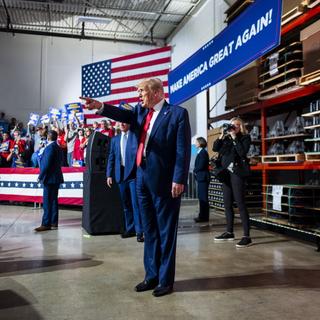


Behind tariff chaos, the deep roots of the Trump Doctrine
In DepthWhile the US president has had to back down on his trade war, the ideological foundation of his decisions is more solid than their confusing, clumsy and brutal form suggests. Trumpism has long-established origins, and it is here to stay.
During the 2016 US presidential election campaign, The Atlantic warned those who, like the press, took Donald Trump "literally, but not seriously," when, like his voters, they should have done the opposite. It was better not to focus on the absurd details but to detect a burgeoning project behind the scenes. A border wall along the Rio Grande allegedly paid for by Mexico, a generalized global trade war: these policies certainly bore the airs of wrestling or reality TV, the art of fake spectacle that Trump and his supporters adore. But they reflected a deep shift in US politics that voters desired. The time had come for isolationism, intended to restore America's greatness after the quagmires in Iraq and Afghanistan, the terrible economic-financial crisis of 2008 and the rise of China.
Alas, 2024 is not 2016. Trump 2 is not Trump 1: it is now necessary not only to take Trump "seriously," but also "literally." The US president has not changed his platform, but this time he is trying to implement it brutally. Moving from wrestling to boxing, Trump is dismantling the world order inherited from the end of the Cold War and his determination has shaken the planet.
Indeed, Trump was caught in his own trap, forced to backpedal on tariffs due to the distrust of financial markets and China's resistance. Certainly, the inconsistencies of the former real estate mogul are notable, such as the material impossibility of replacing the heavy income tax with tariffs, his method of calculating said tariffs, or the bizarre idea of taxing imports from Antarctic territories. He appears to live in the idyllic world of the 1950s, with giant, integrated factories, but globalization has scattered production chains across the planet, with no possible return.
You have 80.95% of this article left to read. The rest is for subscribers only.
